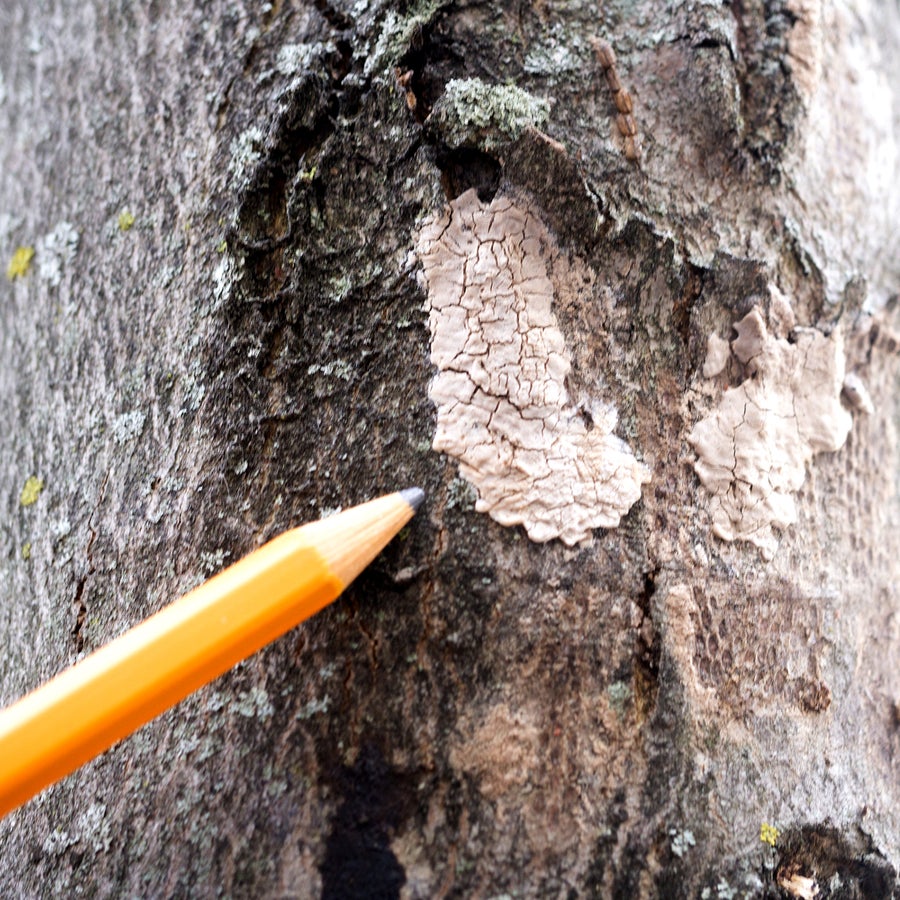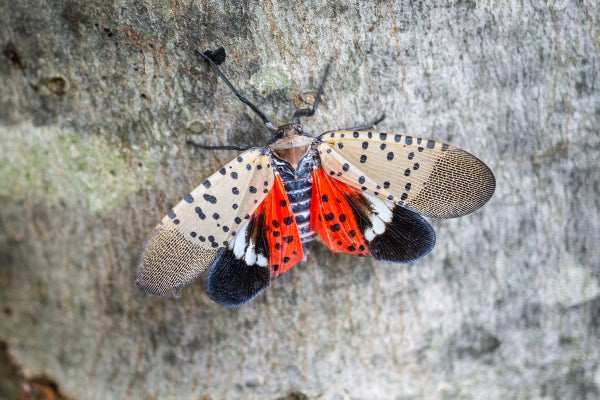Since it was first noticed in Berks County, Pennsylvania, in 2014, the spotted lanternfly—a one-inch-long plant hopper that resembles a moth and is native to China—has been wreaking havoc on East Coast lumber, tree fruit and wine industries. It has spread to at least 26 counties in Pennsylvania, as well as parts of New Jersey, Delaware, Maryland, Virginia, West Virginia and New York State.
The invasive, plant-killing insects are known to lay their eggs on almost any surface, including vehicle exteriors. These egg masses “are most concerning because they can go very far by hitchhiking,” says Maureen Tang, a chemical and biological engineer at Drexel University. Tang is coordinating a project that asks the public to help halt the lanternfly’s spread: anyone who spots an egg mass can submit photographs, with which Tang’s team will train a sophisticated algorithm that scanning devices can use to search for the eggs. (You can contribute images here.)
Adult lanternflies can fly but prefer to hop. They feast on more than 70 plant species and leave behind “honeydew” droppings, which attract wasps and other stinging insects and which breed a black, sooty mold that can significantly damage plants. The mature insects die in the cold, but their egg masses, which can hold between 30 and 50 eggs and look like a grayish putty, withstand winter temperatures and release a new generation in the spring.
On supporting science journalism
If you're enjoying this article, consider supporting our award-winning journalism by subscribing. By purchasing a subscription you are helping to ensure the future of impactful stories about the discoveries and ideas shaping our world today.

Lanternfly eggs. Credit: Getty Images
The team currently has about 400 crowdsourced photographs for its data set and anticipates thousands by winter’s end, says Drexel mechanical engineer Antonios Kontsos, who is building the image-processing algorithm. Once fully trained, it will let scanning devices detect significant infestations in real time, Kontsos says. The system will first be put to work in high-risk areas such as rail and shipping yards, where storage containers often sit around for long periods of time and it is difficult and dangerous for a human to check underneath them for egg masses, Tang says. The lanternflies’ favorite tree, Ailanthus altissima—which is native to areas the bugs came from—tends to grow near railroad tracks.
Drones already use computer vision to scan for signs of pests by flying over crops and treescapes to check for significant areas of damage. But Tang says her team’s type of discrete, close-up egg detection system is new.
“We’ve seen a lot of ingenuity come from spotted lanternfly [research], and this is another great example,” says Heather Leach, who studies these insects at Pennsylvania State University and is not involved in the photography initiative. Any methods that improve the ability to detect and reduce spread of the bug, especially in areas where it has not yet been established, offer a better chance at controlling it, Leach says.
The team aims to finish the algorithm and start using it to search for eggs before the bugs begin emerging. Egg masses are much easier to contain than jumping nymphs or swarming adults, notes Karen Verderame, curator of entomology at the Academy of Natural Sciences of Drexel University. Researchers will first target top-priority areas using a portable scanning device that can search for egg masses in visible, infrared and ultraviolet light, Kontsos says. He anticipates someday using a version of this device in a “precision-agriculture framework”—installing it on a drone for efficient, large-area scans.
“From an environmental perspective, [this multidisciplinary effort is] the way of the future,” Verderame says. “You have to take an out-of-the-box perspective. It really will take a collaboration of the sciences.”
Editor’s Note (2/3/21): This story has been edited after posting to update descriptions of the lanternfly’s native range, the states where the insect has spread in the U.S. and Karen Verderame’s affiliation.
A version of this article with the title “Lanternfly Invasion” was adapted for inclusion in the March 2021 issue of Scientific American.
